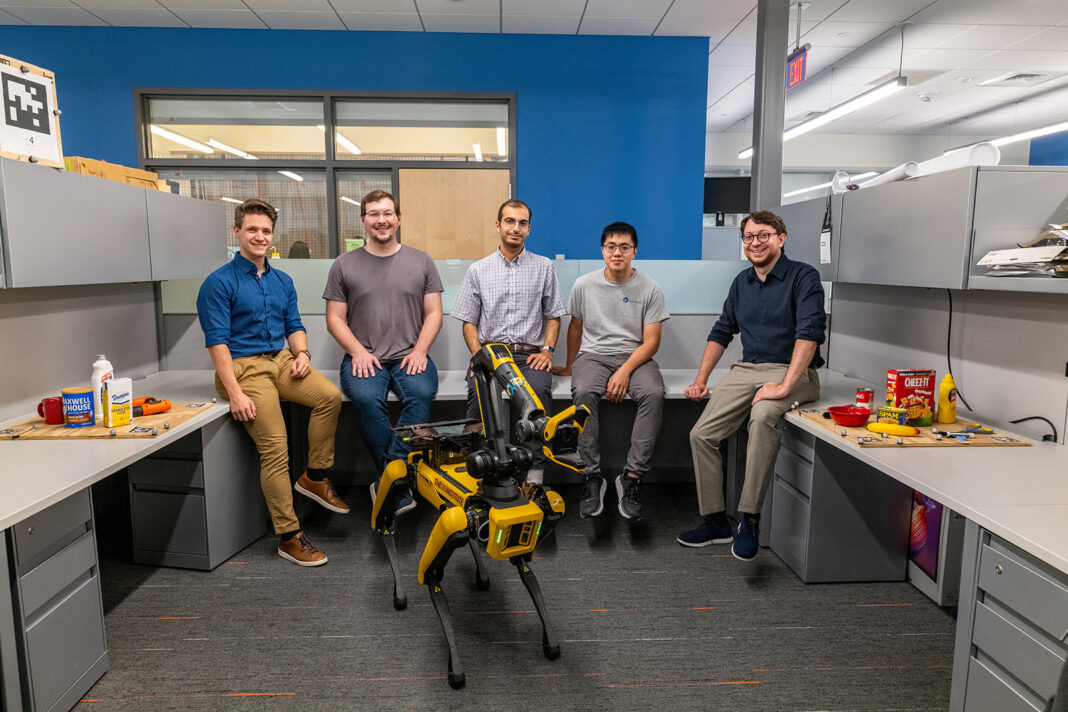In Short:
MIT engineers have created a robot called Clio that helps robots make smart decisions about what to focus on based on specific tasks. Clio processes natural language commands to identify only relevant parts of a scene, enhancing task performance. Tested in real environments, it helps robots like Boston Dynamics’ Spot complete tasks efficiently. Future plans aim to improve Clio’s understanding for complex missions, like search and rescue.
Researchers at MIT have made significant advancements in robotic capabilities with the development of an innovative method that allows robots to perform intuitive, task-oriented decision-making. This novel approach, referred to as Clio, empowers robots to identify and prioritize aspects of their environment based on the specific tasks they are assigned.
Implementation of Clio
Clio allows a robot to process a list of tasks articulated in natural language and consequently determines how detailed its environmental interpretations need to be. It intelligently filters out irrelevant information, focusing solely on the elements pertinent to its tasks. In various experiments conducted across environments ranging from a cluttered cubicle to a five-story building on the MIT campus, the team successfully utilized Clio to automatically dissect scenes into varying levels of detail, based on directives like “move rack of magazines” and “get first aid kit.”
Notably, when deployed on a quadruped robot, Clio enabled real-time mapping and identification of critical scene segments related to specific tasks. This allowed the robot to efficiently navigate its environment while filtering out distractions, such as ignoring irrelevant office supplies when tasked with retrieving a dog toy.
Significance of the Name
The name Clio is derived from the Greek muse of history, reflecting the system’s capability to focus on and retain only the crucial elements necessary for each task. The researchers envision broad applicability for Clio in various domains, including search and rescue operations, domestic assistance, and factory automation.
According to Luca Carlone, associate professor in MIT’s Department of Aeronautics and Astronautics and principal investigator in the Laboratory for Information and Decision Systems, “Search and rescue is the motivating application for this work, but Clio can also enhance the functionality of domestic robots and robots operating on a factory floor alongside humans. It’s fundamentally about enabling robots to comprehend their surroundings and retain essential information to accomplish their missions.”
Methodology and Challenges
Although strides in computer vision and natural language processing have enhanced robots’ ability to identify objects in controlled environments, traditional methods have largely been restricted to “closed-set” scenarios. Recent efforts have pivoted towards “open-set” recognition, wherein robots can utilize deep learning to analyze vast datasets of images and associated text.
Nevertheless, determining which segments of a scene are relevant for specific tasks remains a challenge. As Dominic Maggio explains, conventional methods often employ fixed levels of abstraction that do not consider task relevance, potentially leading to ineffective mappings for the robots.
Advancing with Clio
The MIT team’s Clio project aims to refine how robots interpret their environments, allowing for automatic adjustment of granularity based on their designated tasks. For example, in a situation where a task involves moving a stack of books, the system recognizes the entire stack as relevant. However, if the instruction specifies retrieving only a specific book, Clio focuses solely on that item.
This approach integrates cutting-edge computer vision with large language models. It utilizes advanced segmentation techniques to break down images into smaller components, followed by an information theory-inspired “information bottleneck” method to retain only the most relevant segments for a given task. In practical applications, the system has been tested effectively in real-world settings, including the personal apartments of the researchers.
Future Directions
The team successfully demonstrated Clio on Boston Dynamics‘ quadruped robot, Spot, allowing for real-time task execution and efficient mapping of relevant scene segments. Such accomplishments mark a significant leap from prior methods that often required significantly longer processing times.
Looking ahead, the research team plans to adapt Clio for higher-level tasks and improve upon existing visual representations to achieve a more nuanced understanding – a capability essential for complex operations such as search and rescue where directives might be more abstract, like locating survivors or restoring power.
This research has received support from various agencies, including the U.S. National Science Foundation, the Swiss National Science Foundation, MIT Lincoln Laboratory, the U.S. Office of Naval Research, and the U.S. Army Research Lab.





